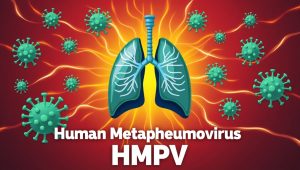
Human Metapneumovirus (HMPV) is a respiratory virus that is gaining attention in Indonesia due to its potential to cause widespread illness, particularly among vulnerable groups. Understanding the symptoms and adopting preventive measures can help Indonesians protect themselves and their communities from this underrecognized virus.
What is HMPV?
HMPV belongs to the Paramyxoviridae family, similar to respiratory syncytial virus (RSV). It spreads through respiratory droplets, direct contact with infected individuals, or contaminated surfaces. While the virus can infect people of all ages, it poses the greatest risk to children, the elderly, and individuals with weakened immune systems.
Symptoms of HMPV
The symptoms of HMPV can range from mild to severe, depending on the individual’s age, health status, and immune response. Common symptoms include:
- Fever: A common early sign of infection.
- Cough: Persistent and sometimes accompanied by phlegm.
- Nasal Congestion: Stuffy or runny nose.
- Shortness of Breath: Difficulty breathing, especially in severe cases.
- Wheezing: A whistling sound while breathing, often seen in young children and those with preexisting respiratory conditions.
In severe cases, HMPV can lead to complications such as pneumonia or bronchiolitis, requiring hospitalization. Children under five years old, the elderly, and individuals with chronic health conditions are particularly at risk of these severe outcomes.
Why Awareness is Important
In Indonesia, public awareness of HMPV remains low. Many people mistake its symptoms for those of the common cold or flu, delaying diagnosis and treatment. This lack of awareness not only increases the risk of severe outcomes but also facilitates the spread of the virus within communities.
Preventing HMPV
Prevention is key to reducing the impact of HMPV. Here are some effective measures to protect yourself and others:
- Practice Good Hygiene:
- Wash your hands regularly with soap and water for at least 20 seconds.
- Use hand sanitizer with at least 60% alcohol when soap and water are unavailable.
- Avoid Close Contact:
- Maintain a safe distance from individuals showing symptoms of respiratory illness.
- Avoid touching your face, especially your eyes, nose, and mouth, with unwashed hands.
- Disinfect Surfaces:
- Regularly clean and disinfect frequently touched surfaces, such as doorknobs, phones, and tables.
- Wear Masks:
- Use masks in crowded or high-risk areas to reduce the spread of respiratory droplets.
- Stay Home When Sick:
- If you experience symptoms of HMPV, stay home to prevent spreading the virus to others.
Seeking Medical Attention
If you or a loved one experience severe symptoms such as difficulty breathing, high fever, or persistent wheezing, seek medical attention immediately. Early diagnosis and treatment can significantly improve outcomes, especially for high-risk individuals.
Community Efforts
Community engagement is essential to combat HMPV effectively. Public health campaigns can educate Indonesians about the virus, its symptoms, and preventive measures. Schools, workplaces, and local organizations can play an active role in promoting hygiene practices and supporting those affected by the virus.
Conclusion
HMPV is a respiratory virus that poses a significant health risk, particularly to vulnerable populations in Indonesia